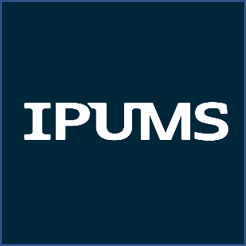General Census of Population and Housing 1996 - IPUMS Subset
Guinea, 1996
Get Microdata
Reference ID
GIN_1996_PHC_v01_M_v03_A_IPUMS
Producer(s)
National Census Bureau, Republic of Guinea, Minnesota Population Center
Collection(s)
Metadata
Created on
May 14, 2011
Last modified
May 01, 2018
Page views
20755
Downloads
2562
- Data files
- GIN1996-H-H
- GIN1996-P-H
Water supply (GN1996A_0043)
Data file: GIN1996-H-H
Overview
Valid:
0
Invalid:
0
Type:
Discrete
Decimal:
0
Start:
128
End:
128
Width:
1
Range:
1 - 9
Format:
Numeric
Questions and instructions
Literal question
Housing characteristics
H02 Source of water
[] 1 Faucet water in the home
[] 2 Faucet water elsewhere
[] 3 Dug well
[] 4 Drilled well
[] 5 Developed spring
[] 6 Surface water
[] 7 Other
H02 Source of water
[] 1 Faucet water in the home
[] 2 Faucet water elsewhere
[] 3 Dug well
[] 4 Drilled well
[] 5 Developed spring
[] 6 Surface water
[] 7 Other
Categories
| Value | Category |
|---|---|
| 1 | Faucet in home |
| 2 | Faucet elsewhere |
| 3 | Dug well |
| 4 | Drilled well |
| 5 | Developed spring |
| 6 | Surface water |
| 7 | Other |
| 8 | Unknown |
| 9 | NIU (not in universe) |
Warning: these figures indicate the number of cases found in the data file. They cannot be interpreted as summary statistics of the population of interest.
Interviewer instructions
H02. Water supply
The fight against poverty in our country often takes the form of increasing the percentage of the population with access to potable water. In this situation, determining the means by which households obtain water is very important information for public authorities.
Here it is a question of indicating the kind (nature) of the water normally used by the households for their drinking and other household uses (dishes, cooking, laundry, bodily care, etc.).
There are 7 possible responses, the first 6 of which are very explicit: "faucet at home" (in the lodging or in the compound) and "faucet elsewhere" (outside the compound) are 2 cases that refer to running water distributed by the Guinea Water Company. "Drilling" and "developed wells" are 2 intermediate situations which fall within the framework of the village hydraulics [plan] completed by the National Service for the Development of Water Supply Points (service national d'aménagement des points d'eau), or of NGOs, and managed by the rural populations themselves. "Ordinary well" is without doubt the oldest situation, used by populations in rural zones as well as in some urban zones and zones peripheral to urban areas. "Surface water" (rivers, creeks, lakes, ponds, pools, etc.) constitute another relatively old situation used by populations to cover their water supply needs. Ask the head of household or his representative the following question: "What is the source of the water which fulfills your household's water needs in the home?"
[p. 57]
Circle the number of the code which corresponds to the answer you receive. The head of household should give only one answer. If the household's water supply comes from several different sources at once, ask the head of household to tell you which one he believes is used most often.
The fight against poverty in our country often takes the form of increasing the percentage of the population with access to potable water. In this situation, determining the means by which households obtain water is very important information for public authorities.
Here it is a question of indicating the kind (nature) of the water normally used by the households for their drinking and other household uses (dishes, cooking, laundry, bodily care, etc.).
There are 7 possible responses, the first 6 of which are very explicit: "faucet at home" (in the lodging or in the compound) and "faucet elsewhere" (outside the compound) are 2 cases that refer to running water distributed by the Guinea Water Company. "Drilling" and "developed wells" are 2 intermediate situations which fall within the framework of the village hydraulics [plan] completed by the National Service for the Development of Water Supply Points (service national d'aménagement des points d'eau), or of NGOs, and managed by the rural populations themselves. "Ordinary well" is without doubt the oldest situation, used by populations in rural zones as well as in some urban zones and zones peripheral to urban areas. "Surface water" (rivers, creeks, lakes, ponds, pools, etc.) constitute another relatively old situation used by populations to cover their water supply needs. Ask the head of household or his representative the following question: "What is the source of the water which fulfills your household's water needs in the home?"
[p. 57]
Circle the number of the code which corresponds to the answer you receive. The head of household should give only one answer. If the household's water supply comes from several different sources at once, ask the head of household to tell you which one he believes is used most often.
Description
Definition
This variable indicates the source of water supply in the housing.
Universe
Non-collective dwellings
concept
Concept
| var_concept.title | Vocabulary |
|---|---|
| Utilities Variables -- HOUSEHOLD | IPUMS |
